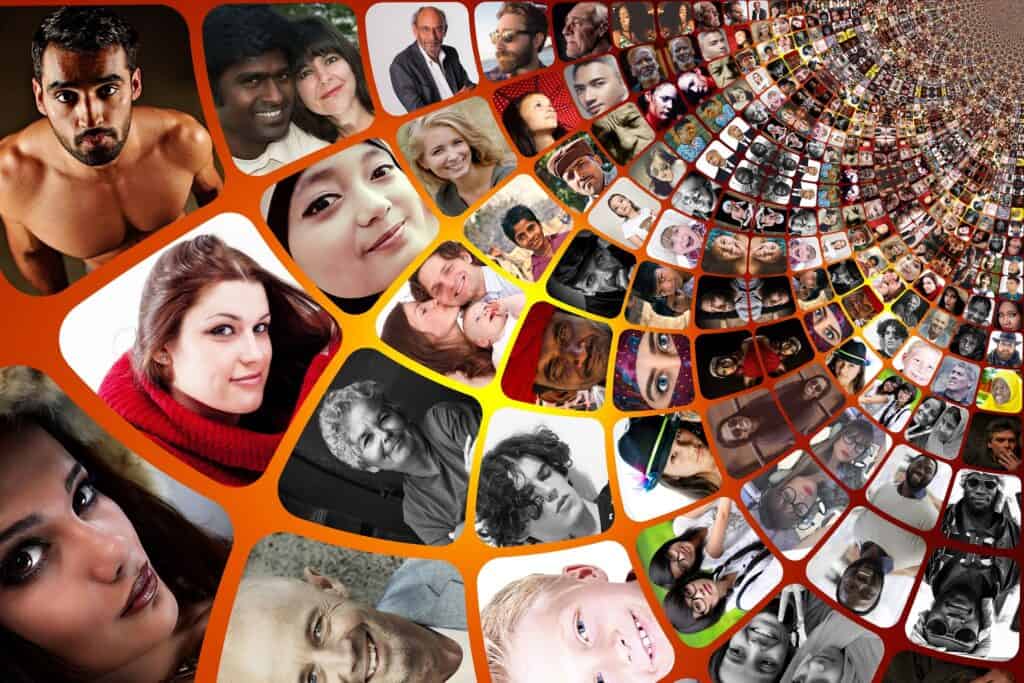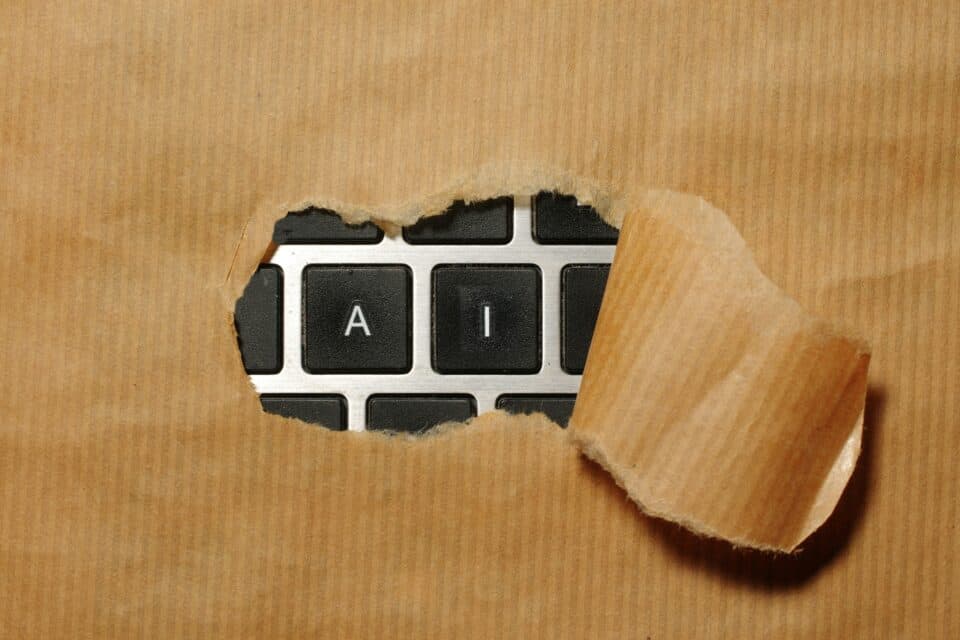A community conversation exploring the Future of Facilitation with Generative AI Models
Last week’s facilitation lab session aimed to explore the potential and challenges of integrating Artificial Intelligence (AI) into the field of facilitation. Participants expressed a range of perspectives and emotions, from eagerness to fear and anxiety, but curiosity remained a common thread. This blog post serves as a synthesis and summary of the session for those who missed it and a source of reflective insights for those who attended.
After they joined, participants were asked to rate their confidence in using AI in facilitation thus far. Participants at the Facilitation Lab had varying confidence levels regarding using AI in facilitation. Some were curious to see where the technology would lead, while others had already experimented with a few tools, such as ChatGPT, Bard, Claude, and Dal-E. A few participants had experience building AI models for businesses and using AI for fine art creation.
Some expressed skepticism about AI’s potential, questioning its reliability and usefulness. Some participants were in the middle of their AI journey, excited to learn more, and eager to build workflows for applications like social media content generation.
Others mentioned using AI for tasks like writing acceptable use policies, experimenting with ChatGPT in facilitation and consulting, and overcoming writer’s block while creating content. Some participants were researching and testing AI applications but faced limitations in how they could implement AI at work.
Overall, the group’s confidence in using AI in facilitation ranged from beginners to experienced users, showcasing the diverse spectrum of engagement with AI in the facilitation community.

Breakout Groups
Following this exercise, they were divided into small groups of three to share their previous experiences with AI and discuss their thoughts on its application. After the group discussions, participants reconvened to share their experiences and insights with the larger group.
Some participants noted that AI could generate a “general consensus” of public knowledge, while others remained skeptical about its benefits. A few participants mentioned using AI as a drafting tool and found it helpful, although not always perfect. Some expressed concerns about the ethical implications of AI and the potential for rapid misinformation cultivation.
Examples of AI tools mentioned included Fireflies.ai for video meeting transcription and summary analytics, Otter.ai for transcription, and ChatGPT for research and content development. Participants highlighted the importance of writing effective prompts for AI and leading with curiosity versus dishing out commands.
Overall, the discussions in the Facilitation Lab revealed a diverse range of opinions and experiences with AI, from those who found it useful in various applications to those who were more cautious or skeptical about its potential impact on facilitation and other fields.

AI Tools and Techniques in Facilitation
During the session, participants explored various AI tools and techniques that could be integrated into the facilitation process. These innovative tools promise to streamline and augment the facilitation experience in different ways:
- ChatGPT for brainstorming, content creation, and summarization: ChatGPT can generate ideas, help draft content, and even summarize lengthy discussions. These capabilities can save time and enable facilitators to focus on higher-level tasks.
- DALLE-2 for visual facilitation and generating images: DALLE-2 can generate images from text descriptions, enabling facilitators to create compelling visual aids without needing to be expert artists themselves.
- Miro AI for automated sorting and grouping of content: Miro AI can automatically analyze, sort, and group content, making it easier for facilitators to synthesize information and identify patterns.
- AI presentation builders for creating engaging presentations: AI-driven presentation builders can help facilitators design visually appealing and dynamic presentations that keep their audience engaged and focused.
After a general discussion, participants were asked to spend time silently generating ideas for 3 different use cases following the structural elements of Magical Meetings: Before the Meeting, During the Meeting, and After the Meeting. After solo generating, we again discussed as a group. Here’s what we learned:
Before the meeting
How AI can assist facilitators in designing more effective and interactive sessions, easing the workload and allowing them to focus on the human aspect of facilitation.
- Streamline preparation by generating agendas, email drafts, and meeting outlines.
- Brainstorm activity ideas, challenge statements, and interview questions to drive the session.
- Create emotive visuals and engaging Miro boards for better participant experience.
- Synthesize research and help customize content for specific audiences or cultures.
- Generate discussion questions and refining language to improve clarity and engagement.
During the meeting
Applications showcase the potential of AI in supporting facilitators during meetings, enabling more effective communication, collaboration, and creative problem-solving.
- Provide real-time translation and language support, facilitating communication among diverse attendees and summarizing meeting content for better tracking.
- Instantly synthesize diverse perspectives, fostering richer discussions, and assisting in brainstorming, idea generation, and collaborative decision-making.
- Monitor participant engagement, offering icebreakers or interventions based on detected emotions, and suggesting breaks as needed.
- Streamline group organization, forming teams based on shared interests or random allocation for effective collaboration.
- Enhance meeting visuals with tools like DALL-E, creating images or metaphors to effectively illustrate concepts.
After the meeting
Techniques for keeping participants engaging, looping in others, sharing insights, testing ideas, and storytelling once the meeting has concluded.
- Develop prototypes and generate ad campaigns with landing pages for Design Thinking feedback and quick A/B testing.
- Create 3D models for integration into Unity or VR environments.
- Evaluate meeting effectiveness, identifying areas for improvement and generating summary reports of outcomes.
- Recommend next steps or action items in alignment with meeting objectives and results.
- Automatically schedule follow-up meetings, taking into account participant availability.
As exciting as these AI tools may be, attendees also recognized the importance of maintaining a human touch and being mindful of ethical considerations.
FREE DOWNLOAD
Get Our ChatGPT Prompt Aide
ChatGPT has lots of potential but how do we get the most out of it? It's all about the prompt. Writing and tweaking prompts specific to your needs is key to unlocking the best results. Use this tool template to think through what you'd like to achieve and how to construct the ideal prompt for ChatGPT to get you there.
The Human Factor in Facilitation
Ravit Yanay, one of the participants, eloquently expressed her concerns about the human factor in facilitation. She emphasized that the process of sorting through ideas and building consensus is essential for fostering cohesion, understanding, and empathy among participants. Ravit’s thoughts highlighted the need for facilitators to strike a balance between embracing AI tools and preserving the valuable human aspects of facilitation:
“My biggest issue is that as facilitators, we’re going to have to be smarter in what parts of the session we want to speed up with AI and in what areas we have added human value that requires the work to be done by the people in the room because it does something to their thinking.”

The Ethics and Concerns of AI in Facilitation
Attendees expressed diverse perspectives regarding AI. Some expressed concerns about losing the depth of thought and insight, a rise in laziness, loss of craft, and even theft or ownership of art and creative output. These concerns sparked important discussions about the ethical implications of integrating AI into the facilitation process.
To address these concerns, it is crucial for facilitators to carefully consider how and when to incorporate AI tools into their practice, always prioritizing the well-being and development of the people they serve.
Our conclusion as a group was that facilitation will become more critical as AI becomes more sophisticated. We’ll be required to help everyone navigate what it means to be human in this new era. It’ll be a time of renewed humanity that takes curiosity and patience.
The Future of Facilitation and AI
As AI continues to evolve and develop, facilitators need to stay informed about the latest advancements and be prepared to adapt their methods accordingly. By staying up-to-date and open to change, facilitators can ensure they are providing the best possible support for their clients while maintaining the human connection that is so vital to the facilitation process.
One way to stay ahead in the field is to invest in professional development, such as our facilitation certification program. This comprehensive course covers not only the traditional facilitation techniques but also addresses the emerging role of AI in the industry. By participating in this program, facilitators can deepen their understanding of AI, explore its potential applications, and learn how to maintain ethical considerations in their practice.
The facilitation lab session on AI in facilitation was a thought-provoking and insightful experience for all who attended. It revealed the potential of AI tools to enhance the facilitation process while also emphasizing the importance of preserving the human touch and addressing ethical concerns. As we look to the future, it is crucial for facilitators to be proactive in understanding and integrating AI technologies into their practice, ensuring they continue to provide the best support possible for their clients.
If you’re not sure where to start, here are some commitments our attendees made:
- Explore using AI for “before meeting” activities such as generating ideas, refining language, and creating agendas
- Look into using SpeakerCoach and ChatGPT for facilitation and workshop design
- Collaborate with other facilitators and learn from their experiences with AI
- Experiment with prototyping using AI tools and practices
- Learn more about using AI for interactive learning design and content creation
- Put time on the calendar to explore more AI tools
- Find others who see the potential for AI in facilitation and collaborate with them
- Participate in an AI hackathon
If you’re interested in expanding your facilitation skills and exploring the intersection of AI and facilitation, consider joining our facilitation community or applying for our facilitation certification. This 12-week program will provide you with the knowledge and tools necessary to excel in the ever-evolving world of facilitation. By investing in your professional development, you’ll be well-prepared to navigate the challenges and opportunities that lie ahead in the rapidly advancing field of facilitation.


